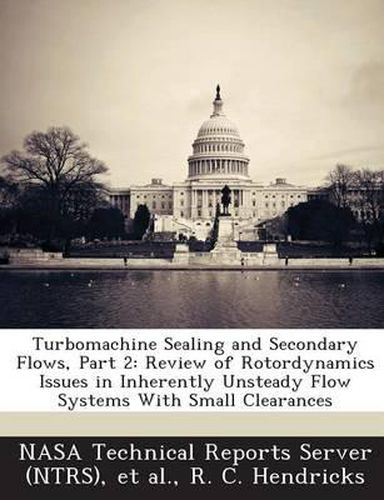Readings Newsletter
Become a Readings Member to make your shopping experience even easier.
Sign in or sign up for free!
You’re not far away from qualifying for FREE standard shipping within Australia
You’ve qualified for FREE standard shipping within Australia
The cart is loading…






Today’s computational methods enable the determination of forces in complex systems, but without field validation data, or feedback, there is a high risk of failure when the design envelope is challenged. The data of Childs and Bently and field data reported in NASA Conference Proceedings serve as sources of design information for the development of these computational codes. Over time all turbomachines degrade and instabilities often develop, requiring responsible, accurate, turbomachine diagnostics with proper decisions to prevent failures. Tam et al. (numerical) and Bently and Muszynska (analytical) models corroborate and implicate that destabilizing factors are related through increases in the fluid-force average circumferential velocity. The stability threshold can be controlled by external swirl and swirl brakes and increases in radial fluid film stiffness (e.g., hydrostatic and ambient pressures) to enhance rotor stability. Also cited are drum rotor self-excited oscillations, where the classic fix is to add a split or severed damper ring or cylindrical damper drum, and the Benkert-Wachter work that engendered swirl brake concepts. For a smooth-operating, reliable, long-lived machine, designers must pay very close attention to sealing dynamics and diagnostic methods. Correcting the seals enabled the space shuttle main engine high-pressure fuel turbopump (SSME HPFTP) to operate successfully.
$9.00 standard shipping within Australia
FREE standard shipping within Australia for orders over $100.00
Express & International shipping calculated at checkout
Today’s computational methods enable the determination of forces in complex systems, but without field validation data, or feedback, there is a high risk of failure when the design envelope is challenged. The data of Childs and Bently and field data reported in NASA Conference Proceedings serve as sources of design information for the development of these computational codes. Over time all turbomachines degrade and instabilities often develop, requiring responsible, accurate, turbomachine diagnostics with proper decisions to prevent failures. Tam et al. (numerical) and Bently and Muszynska (analytical) models corroborate and implicate that destabilizing factors are related through increases in the fluid-force average circumferential velocity. The stability threshold can be controlled by external swirl and swirl brakes and increases in radial fluid film stiffness (e.g., hydrostatic and ambient pressures) to enhance rotor stability. Also cited are drum rotor self-excited oscillations, where the classic fix is to add a split or severed damper ring or cylindrical damper drum, and the Benkert-Wachter work that engendered swirl brake concepts. For a smooth-operating, reliable, long-lived machine, designers must pay very close attention to sealing dynamics and diagnostic methods. Correcting the seals enabled the space shuttle main engine high-pressure fuel turbopump (SSME HPFTP) to operate successfully.